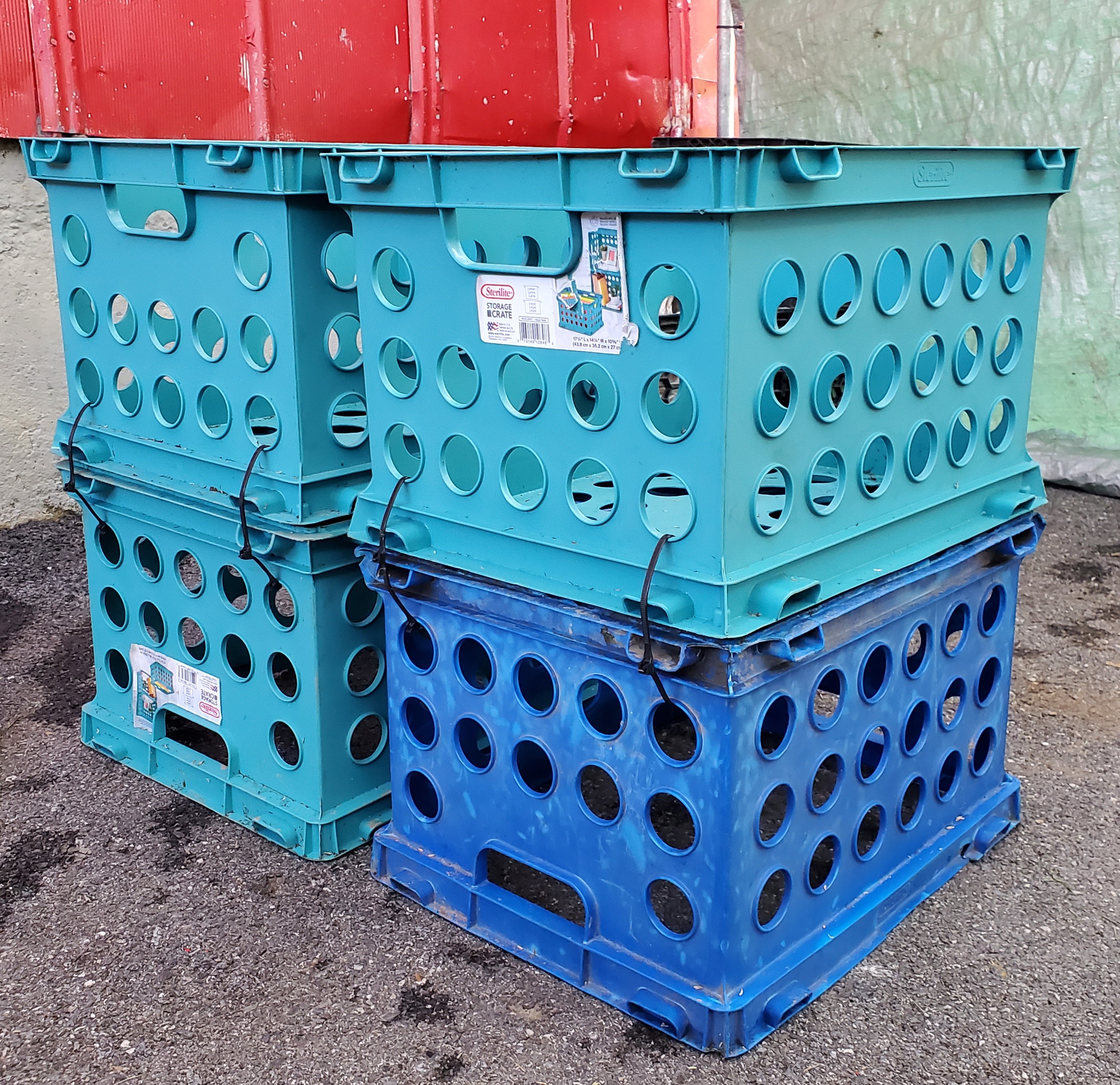
Plastic crates used to harvest sweet corn at Grabowski Farm in West Rutland.
Farmers often devise creative solutions and methods to fit their unique operations. In this series, we feature practices that Vermont fruit and vegetable growers use to enhance food safety, increase efficiency, protect product quality, and improve employee satisfaction. This month, we’re featuring Grabowski Farm, a family owned and operated dairy farm and sweet corn stand in West Rutland, VT.
Sweet corn harvest technique
Grabowski Farm uses a simple, custom container setup to harvest sweet corn. Using nylon cable ties, they attach two plastic crates, one facing up and one facing down (the bottoms get zip tied together). The lower crate acts as a platform to keep the top container elevated off the ground. The harvesters move the stacked crates along the row and pick corn into the top, upright crate. Once they are filled with vegetables, the harvesters dump them out truck bed that has been pressure washed to remove dirt and debris and then sanitized.
Tip: plastic crates are often available in stores at the end of summer because they are popular for students.
Why it works
The farmers note several benefits to this setup. The crates are inexpensive, lightweight, and hold just the right amount of corn, so they are not too heavy when filled up. Because the base is mostly open, they do not collect much dirt. The material and construction make them easy to clear of debris, scrub with detergent, rinse clean, and sanitize.
Importantly, this approach keeps the container holding the produce off the ground. Soil can be a source of foodborne pathogens, like E. coli or Salmonella bacteria, so it’s a good practice to prevent harvested crops from contacting the soil. This arrangement also keeps the crate at a more ergonomic height for harvesting standing up than a single container placed directly on the ground.
Taking the next step
This technique may also work to harvest trellised or staked crops such as tomatoes or cucumbers. A variation on this theme is keeping waxed corrugated boxes off the ground when field-packing. West Farm in Cambridge, VT places a waxed cardboard box inside a durable plastic fish tote. The tote can then be placed or dragged in between rows while crops such as greens are packed into the wax box. The tote prevents soil and debris from sticking to or entering the bottom of the wax box.
For more information about on-farm food safety and resources for fruit and vegetable growers, visit our Produce Safety Resources page.
